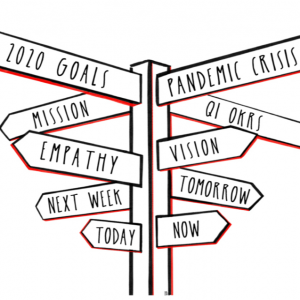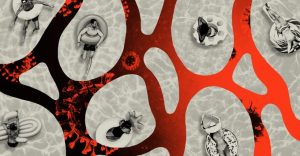“Hope with realism.”
April 14, 2020Help us become a community that vulnerably shares each other’s burdens and the weight of glory. Listen to our hearts’ longings for the healing of our world.
Right now, it seems the whole world is in the belly of the beast together. But we are also safely held in the loving hands of [Love], even if we do not yet fully realize it.
All of us experience the absurd, the tragic, the nonsensical, the unjust, but we do not all experience pain in the same way, so try not to judge others too harshly for their reactions. We don’t know what has brought them to this point.
[Life] uses tragedy, suffering, pain, betrayal, and death itself, not to wound or punish us, but to bring us to a Larger Identity: “Unless the single grain of wheat loses its shell, it remains just a single grain” (see John 12:24). The shell must first crack for the expanded growth to happen. In such a divine economy, everything can be transmuted, everything can be used, and nothing is wasted.
-Fr Richard Rohr
#MustRead
Our Pandemic Summer
by Ed Yong
‘The fight against the coronavirus won’t be over when the U.S. reopens. Here’s how the nation must prepare itself.
When restrictions relax, as they are set to do on April 30, the coronavirus will likely surge back, as it is now doing in Singapore, China, Hong Kong, Taiwan, and other Asian states that had briefly restrained it.
[From FOX NEWS contributor Bill Bennett and former Education Secretary in Ronald Reagan’s administration: ““61,000 is what we lost to the flu in 2017 and 2018,” Bennett declared. “The flu. Now, we all regret the loss of 61,000 people, if that’s what it turns out to be. I’m going to tell you I think it’s going to be less.”
“But if you look at those numbers and see the comparable, we’re going to have fewer fatalities from this than from the flu,” he added.]
What will May bring? Or June? What happens as this seemingly interminable spring rolls into a precarious summer? When will things go back to normal?
The options are limited. Early inaction left the U.S. with too many new cases, and just one recourse: Press a societal pause button to buy enough time for beleaguered hospitals to steel themselves for a sharp influx in patients. This physical-distancing strategy is working, but at such an economic cost that it can’t be sustained indefinitely. When restrictions relax, as they are set to do on April 30, the coronavirus will likely surge back, as it is now doing in Singapore, China, Hong Kong, Taiwan, and other Asian states that had briefly restrained it.
I’m reminded of images from World War II as people in London walked to work, briefcases in hand, against a backdrop of bombed-out buildings. I think we are in store for a similar period in history, as we learn to make greater peace with the world’s chaos and our own mortality.’

